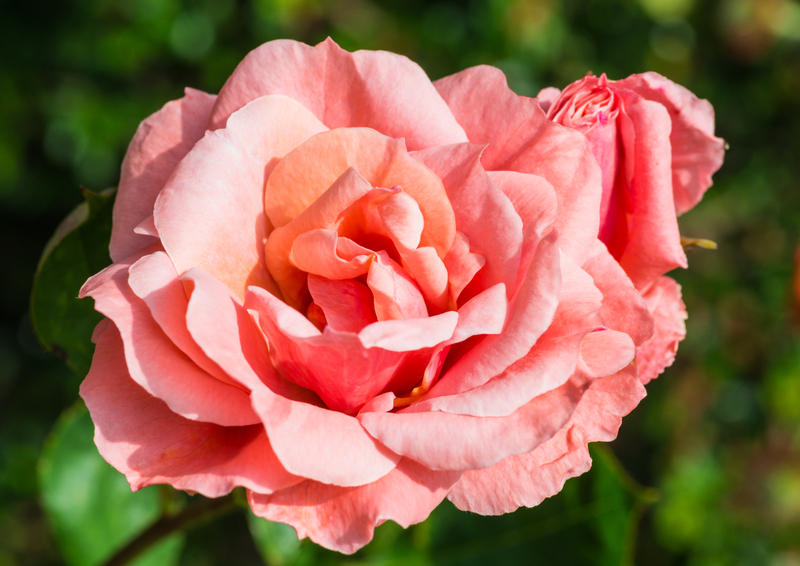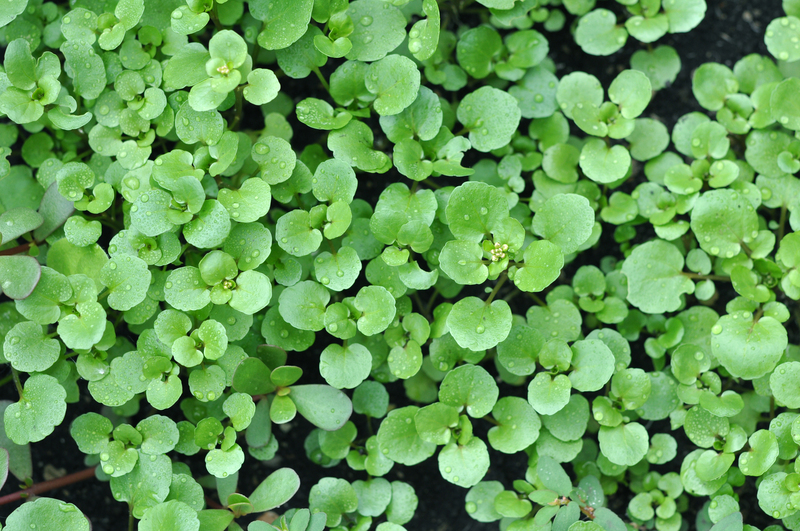Essential Tips for Crafting an Engaging Child Garden
Posted on 25/06/2025
A children's garden can be a magical space where young imaginations bloom alongside flowers and vegetables. Designing an engaging child garden involves creative planning, understanding children's needs, and incorporating features that foster learning, play, and discovery. Whether you're a parent, teacher, or landscape enthusiast, this comprehensive guide will help you create an outdoor haven that sparks curiosity and joy.
Why Create a Garden for Children?
Before delving into essential tips for creating a garden for kids, it's important to understand why it matters. A well-designed children's garden offers:
- Educational opportunities: Children learn about plant life cycles, wildlife, and environmental stewardship.
- Physical activity: Gardening gets kids moving, digging, and exploring outdoors.
- Emotional benefits: Time in nature reduces stress and enhances overall well-being for children.
- Connection to nature: A child-friendly garden encourages respect and love for the natural world.
- Family bonding: Gardening engages all ages and fosters meaningful interactions.

Choosing the Perfect Location for Your Child's Garden
Location is one of the crucial foundations in building a captivating children's garden. Consider the following when picking the perfect spot:
- Sunlight: Most vegetables and flowers require at least 6 hours of sunlight daily.
- Safety: Choose a visible area free from hazards like deep ponds or sharp objects.
- Accessibility: The space should be easily reachable for children and supervising adults alike.
- Proximity: A garden close to the house or classroom encourages regular visits.
Tip: If yard space is limited, consider raised beds, containers, or community gardens as alternatives.
Design Principles of a Fun Children's Garden
A child's garden should be more than rows of plants--it should be an engaging learning playground. Use these principles to enhance your design:
Incorporate Variety and Color
- Mix up textures: Blend soft grasses, fuzzy leaves, and fragrant herbs for sensory appeal.
- Seasonal interest: Select plants that bloom or fruit at different times to maintain excitement year-round.
- Vibrant colors: Kids are drawn to bold hues--think sunflowers, cosmos, zinnias, and marigolds.
Paths, Hiding Spots, and Secret Spaces
- Winding paths: Let children meander through the garden with curving stone or mulch paths.
- Hideaways: Plant living teepees, bean tunnels, or willow huts for shady retreats and imaginative play.
- Mini "rooms" or sections: Divide the garden with low hedges or flower borders to evoke a sense of discovery.
Interactive Features
- Stepping stones: Decorate with painted or mosaic stones that invite hopping and skipping.
- Raised beds: Ensure easy access for little hands to plant, weed, and harvest.
- Water elements: Add birdbaths or child-safe fountains for sensory enjoyment and wildlife-friendly appeal.
- Musical features: Suspend wind chimes or create a music wall from recycled materials.
Safety First
- Avoid toxic plants: Always check for plant toxicity before including anything in a children's garden.
- Soft surfaces: Use grass, mulch, or rubber matting to soften falls and prevent injuries.
- Clear boundaries: Fence or edge the area to keep children within sight and limit pet access.
Essential Plant Choices for a Child Garden
A standout children's garden features interactive, edible, and sensory plants. Here's a selection to consider:
- Sunflowers: Tall, rapid growers that are fun to measure and harvest for seeds.
- Herbs: Mint, basil, and chives--great for touching, smelling, and even snacking!
- Strawberries and cherry tomatoes: Bite-sized crops perfect for little gardeners to pick and taste.
- Snapdragons: Fun "talking" blossoms that delight young imaginations.
- Lamb's ear: Soft, velvety leaves that provide a wonderful tactile experience.
- Runner beans: Fast-growing for teepees, with attractive flowers and edible pods.
- Butterfly and bee plants: Lavender, Echinacea, and butterfly bush bring pollinators and offer endless fun for observation.
Tip: Avoid plants with thorns, spines, or irritating sap (e.g., roses, pokeweed, oleander).
Creative Themes for an Engaging Child's Garden
Having a central theme can make your kid-friendly garden extra memorable. Here are some inspiring ideas:
- Fairy or Gnome Garden: Fill with mini houses, toadstool seats, and whimsical decor.
- Edible Paradise: Grow colorful fruits, vegetables, and herbs children can harvest.
- Sensory Garden: Focus on plants and features that engage all five senses.
- Storybook Garden: Recreate scenes from favorite books (like "Peter Rabbit" or "The Secret Garden").
- Butterfly Hideout: Design with nectar plants and puddling stations to attract and study butterflies.
Engaging Activities for a Children's Garden
A garden isn't just about plants! Consider adding child-centric activities and spaces:
- Nature Scavenger Hunts: Develop checklists for children to find textures, smells, or insect visitors.
- Garden Journals: Encourage note-taking, drawing, or taking photos to document growth and discoveries.
- Composting Corner: Teach sustainability with a compost bin for kitchen scraps and garden cuttings.
- Bug Hotels: Build insect habitats from recycled materials to welcome beneficial bugs.
- Mini-greenhouse or cold frame: Provide a head start for seedlings.
- Outdoor art station: Set up an easel or paint rocks for garden decor.
Incorporating play and learning makes a children's garden unforgettable for years to come.
Accessibility in a Children's Garden
An inclusive child garden must be accessible for children of all abilities and ages. Consider these adjustments:
- Wide, level paths: Ensure wheelchairs or strollers can move easily through the space.
- Raised planters: Make gardening accessible for kids who cannot kneel or bend.
- Accessible tools: Lightweight, child-sized trowels, spades, and watering cans.
- Visual markers: Use bright colors and textures to guide visually impaired children.
Engaging every child in the joys of gardening creates a truly welcoming space.
Maintenance and Ongoing Involvement
Your engaging children's garden design will thrive with regular care and kid participation. Keep these tips in mind:
- Assign age-appropriate jobs: Watering, weeding, and harvesting are great for young kids; older children can help plant and design layouts.
- Encourage ownership: Give each child or class their own plot or row to tend.
- Schedule regular garden days: Make gardening a weekly ritual or after-school project.
- Celebrate milestones: Host harvest parties or flower shows to keep excitement high.
Integrating Garden Features for Learning and Fun
Make your child garden not only beautiful but also an educational landscape. Here are features to include:
- Bird feeders and butterfly houses: Teach basic animal ecology and life cycles.
- Measuring sticks: Chart plant growth or rainfall with colorful rulers in the soil.
- Weather station: Add a rain gauge, thermometer, and windsock to build science skills.
- Labels and signs: Use fun tags to identify plants and herbs, helping with literacy and naming skills.
- Seasonal gardens: Plant bulbs in fall, annual flowers in spring, and observe seasonal changes together.
Tips for Garden Safety
While children's gardens are full of wonder, safety must never be overlooked. Key precautions include:
- Secure boundaries: Fences clearly mark the garden perimeter and keep out stray animals.
- Install seating: Benches or picnic tables provide rest spots in the shade.
- Non-toxic, organic gardening: Skip pesticides and herbicides; use natural pest controls instead.
- Keep tools locked away: Supervise the use of gardening implements.
Always supervise children during garden activities to ensure a safe and enjoyable experience.

Common Challenges & Solutions in Crafting a Children's Garden
- Limited space: Use container gardening or vertical planters on balconies, patios, or rooftops.
- Pests: Teach kids about beneficial insects; use row covers, and practice companion planting for organic pest control.
- Short attention spans: Opt for plants that grow quickly or have dramatic features (e.g., sunflowers, radishes, pumpkins).
- Shady areas: Grow ferns, hostas, or shade-friendly edibles like lettuce and spinach.
Final Thoughts: Bringing Your Engaging Child Garden to Life
Designing an engaging children's garden is a rewarding project that offers fun, education, and nature connection for the next generation. Begin by considering children's unique perspectives, mixing sensory and edible plants, adding playful features, ensuring accessibility, and prioritizing safety. By inviting young gardeners to help in every step--from planning to planting--you'll build not just a garden, but memories that last a lifetime!
- Ready to start? Involve your child in sketching their dream garden today!
- Visit your local nursery for child-safe plant recommendations.
- Encourage friends, family, and classmates to join the adventure--it's more fun together!
For more inspirational ideas and expert advice on designing a child-friendly garden, bookmark this page and share your questions or experiences in the comments below. Here's to growing curiosity, one seed at a time!

